Biden is threatening severe sanctions claiming Russia is getting ready to invade Ukraine. Russia says NATO expansion is a threat and Ukraine is provoking a confrontation. East European journalists Maria Cernat and Boyan Stanislavski join Paul Jay in a collaboration between “The Barricade” and theAnalysis.news.
TRANSCRIPT
Paul Jay
Hi, I’m Paul Jay. Welcome to a special edition of theAnalysis.news. It’s a collaboration with On the Barricades, which is a news organization analysis, which focuses on reports from Eastern Europe. And this is a collaboration between us.
Today, our friends from the Barricades are going to help us explain and help us understand the rising tensions between Ukraine and Russia. It’s a lot of focus now on China, of course, and the rising tensions over Taiwan. But the other potential powder keg is the tension between Russia and the threats from the United States. And at least according to the Western press, a Russian invasion of Ukraine is imminent, a lot of these sources say as it’s reported that Russia is massing perhaps as much as 100,000 troops on the Ukrainian Russian border.
Of course, President [Vladimir] Putin says there’s no intent at all to invade, and I’m not sure there’s any evidence that they are planning to invade. And there are reports, in fact, that the Ukrainian armed forces might be planning something.
Anyway, for a Western audience that doesn’t follow this, it’s all very confusing, and I’m hoping our guests can help us make sense of this.
So first of all, joining us from Bucharest is Maria Cernat. She’s a graduate of the Faculty of Journalism and Communication Sciences and the Faculty of Philosophy at the University of Bucharest, Romania, where she completed her Ph.D. in philosophy. She’s currently an assistant professor at the Department of Communication to Foreign Languages and Public Relations at the Titu Maiorescu University, and I probably mispronounced that University. And she also teaches at the Faculty of Communication and Public Relations.
Also joining us is Boyan Stanislavski. He’s a Bulgarian and Polish activist. And as he told me just before we began, he’s still trying to figure out if he’s more Bulgarian or Polish? And maybe he doesn’t have to answer that question. He’s also a publisher, a translator in the late ’90’s, and he was an activist in the Polish Left and later in the labour movement, particularly in the biggest Polish Labor Confederation, The All Poland Trade Union Alliance. Since 2012, he’s been the editor-in-chief of a weekly magazine. He’s a contributor at The Barracuda, which we’re co-hosting with, and he’s the Polish correspondent for Bulgarian National radio. So thank you both for joining us.
Maria Cernat and Boyan Stanislavski
Thank you for having us.
Paul Jay
So because this is a collaboration, I’m kind of the host, but they’re host, too. So questions will more or less go both ways. On the other hand, I don’t know this topic very well. So I’m mostly just going to ask some basic questions.
So we know on just, I guess it was the day before. [Joe] Biden and [Vladimir] Putin had some kind of video call where they discussed the situation. According to the Western press reports, Biden made threats of serious economic sanctions against Russia if there is a Russian military intervention in Ukraine. Putin, of course, denied that there’s any plans for such a thing.
And this is the real clout of the United States. There’s a massive military presence around the world of the United States. But as I’ve said in some of my other interviews, I don’t know exactly what the hell it accomplishes because everywhere there is a massive military intervention, the Americans lose. The real power is in the financial sector and the ability to manipulate global capitalism against certain targeted countries. And that does carry some weight.
So anyway, Boyan, why don’t you kick us off? What do you make of that phone call? And give us some very basics about the region of Donbas in the South East of Ukraine. And why is there conflict over it?
Boyan Stanislavski
Right, well, I’ll try to be as compact as possible. First of all, the question of the video call between Biden and Putin. Well, on the surface of it, it doesn’t seem it has accomplished much because when you refer to the readouts, to the official readouts, at least that’s all we have; it happened just the day before yesterday. Well, the American readout is extremely vague. It’s literally just one paragraph where it says that sanctions, if aggression, and then the kind of quick repetition of the usual mantra, and that’s it.
And then there’s the Russian readout, which is much more exhaustive. And you can see what points were made, at least by the Russian side, that is, by the President of the Russian Federation, Vladimir Putin. And obviously, there was a lot of talk about red lines. And I think that it’s pretty important because quite a few days ago, when Joe Biden was asked about whether he would accept those red lines that Russia was putting forward, the most important one being to stop the eastward expansion of NATO. Then he said, in a quite, I would say arrogant manner, I’m not accepting anyone’s red lines, this kind of thing. But obviously, he was compelled to at least consider them.
And then the reactions in the media, particularly in the European media, I wasn’t able to see what the American journalists have published about us. But then the neocon aligning, or the European media that support neocon talking points, American neocon talking points, they are already discussing the need to consider negotiations with Russia.
So as I said on the surface of it, probably not much has happened, but obviously, this was an important step in the process. We can only see the beginning, the very beginning of that process, to solve the Ukrainian crisis somehow. Now, of course, there could be all kinds of provocations, and things could change. But to my understanding of what happened during that phone call is that the Russian red lines were officially put forward, and there were a lot of threats of sanctions and so on and so forth. But in a way, it also says that NATO is not prepared in America, or the United States is not prepared to intervene militarily in Ukraine, in support of Ukraine in a case of war breaking out between Russia and Ukraine, which was actually an important confirmation.
We had indications of that previously, for example, Jens Stoltenberg, a Danish bureaucrat who is now the Secretary-General of NATO. Well, I think it was about a week ago when there was this very difficult press conference for him when he was asked repeatedly whether NATO would come to Ukraine’s help in a situation of war. And he finally had to admit, although he really tried not to— I think he lost, like, two or three pounds during that conference judging by the amount of sweat he produced. That no, we have nations that are NATO members, and we have nations that are not NATO members but our partners, and partners and members have different rights, and they only get to have certain expectations.
So obviously, this was already ruled out at the time, but now we have this put forward officially in a discussion between Biden and Putin. There’s more to say about that, but I don’t want to go into the details of the conversation. I suppose they’re not so important. But before I go into the historical context of— the well, maybe not so historical, at least the last ten years, because the whole conflict about Donbas and Eastern Ukraine, it all started in 2013-2014, and I will recap.
Paul Jay
Go ahead, but I think we need to get into that soon because a lot of people can’t even find where this is on a map. So very soon.
Boyan Stanislavski
Okay.
Maria Cernat
I would say it’s probably important to look at the map and also explain a very important thing Ukraine is ethnically diverse in a way that you have Russians there and not just two or three. Like an important percentage of the population of Ukraine is formed by the Russians. So it is very difficult. It is a very difficult situation from that point of view.
Also, because you have this diversity and also the right-wing government, they came to power right after the Maidan took very harsh measurements against this minority, imposing rules such as learning only in Ukrainian schools and forbidding other languages to be spoken in an official context.
I know because Romania, if you look at the map, we have Romanians, also in Ukraine, an important minority, and they were not allowed to have schools in Romania. And also, remember that the Armenian Foreign Minister had to go there. The Minister of Foreign Affairs had to go to Ukraine and negotiate something with the Ukrainian authorities because the Ukrainian authorities, in their overzealous actions against the Russian minority, hurt other minorities, too, like the Romanian one. So we were directly affected by these right-wing government policies.
Boyan Stanislavski
Right.
Maria Cernat
And also, I would like Boyan to show us where the regions of Dombas are because, as you can see from here, the Eastern part of Ukraine is the place where you have most of the Russian minority.
Boyan Stanislavski
It’s not a minority; that’s the majority of the population of Ukraine.
Maria Cernat
I don’t know how many of them are, but it’s an important part. They are treated as a minority, but they are a very important part of the population. It’s not like it’s a minority of 10%. They are like, what, 40% or something? I don’t know exactly.
Boyan Stanislavski
Yeah, well, okay. So perhaps before I answer the question, but I don’t remember the exact statistics, but we’re talking about the majority of the population of Ukraine, which is either Russian speaking or Russian identifying. And this is an important factor, of course, which has to do with the history of the region and so on and so forth. Since we have Ukraine on the map, as I say, I’ll try to be as compact as possible and as clear and transparent as possible, although it’s a long story.
What we see right now on the map is Ukraine, which is below Ukraine, so to say, south of Ukraine is the Black Sea. And you can also see Romania and Moldova separating Ukraine from Romania. Although, Romania and Ukraine do have a common border in the north, in the north of Romania and southwest of Ukraine. And then there’s Russia, which borders between Ukraine and Russia, which you can see on the east of Ukraine. And then there are the two breakaway republics. It’s the Donetsk People’s Republic. That’s what the official name of that breakaway Republic is. And Luhansk People’s Republic.
Paul Jay
Which are both parts of the Donbas region, is that right?
Boyan Stanislavski
Exactly. The Donbas region is a little larger, geographically speaking area than only those two breakaway republics.
Paul Jay
Can I add one thing? And I’m only adding it because I read a chapter recently. In the Western Press, there’s a lot of suggestion that the reason there are so many Russians in the Donbas region is that, during Soviet times, a lot of Russians went to settle there, kind of directed to more Russofi the area. And while that may be true, my understanding is even in the late 19th century, the majority of the cities were Russian-speaking far before there was the Soviet Union. So this idea that the Russians are just recently there is not correct, even though some of it might be.
Boyan Stanislavski
There probably might have been an element of transferring population from one part of Russia to some part of Ukraine during the Soviet times. Nothing significant, really, or at least nothing, I cannot remember anything of any significant nature, such process of any significant nature happening. Or I was never taught about that at school, but I’m not ruling it out. I mean, there might have been things like that might have happened. And let us also remember that at the beginning of the first decades of the existence of the Soviet Union, it also was mass industrialization, and that obviously led to demographical transgressions, if you like. So things of that nature could have happened. But also there were, I’m sure, many people that used to live in Ukraine’s west, which is close to the Polish border today, that were transferred for some reason into Russia’s interior.
So I would say that, and you’re right to point out that we’re talking about, the 19th century is one thing; we should actually roll back to the 16th century when the whole kind of mutual, let’s say, coexistence of those regions began under the auspices of the Russian Kingdom, Empire afterwards.
Historically speaking, Russia consists of three parts: the greater Russia, which is more or less the territory of the Russian Federation today. Lesser Russia, which is exactly east and south Ukraine, like the Donbas region and the region of Odesa, which is a major harbour city on the Black Sea Coast in southern Ukraine, and that’s Lesser Russia. And then there’s White Russia, which is Belarus. Belarus, in Russia, means exactly White Russia. So this is Russia, historically speaking.
Then there’s a long story of all kinds of conflicts where Russians, Ukrainians, Cossacks, the Polish were involved and so on and so forth. In the final aftermath, fast forward to the 20th century. Ukraine became, in 1922, if I remember correctly, part of the Soviet Union. And in the ’50s, the Crimean Peninsula, which is allegedly now occupied. I mean, that’s a term that is widely used by Russians. The Crimean Peninsula was kind of given as a sort of present by [Nikita] Khrushchev, who used to be the Secretary-General of the Communist Party of the Soviet Union at the time. It was given as a sort of gift to the Ukrainian Socialist Republic that used to belong, at the time, to the Soviet Union.
So this was again an administrational thing. I mean, it didn’t really matter at all in terms of the social composition or ethnic composition or anything like that. It was just an administrational transfer and nothing more than that, a bureaucratic measure, I would say.
And then we have the split or the fall apart; the breaking apart of the Soviet Union and Ukraine became an independent State. And from the very beginning, the Ukrainians have actually had this problem. How did they sort of put all those things together that they have? I mean, the territory and the people with different identities and so on. How do they make it a functional national State? And that has been the question from the very, very beginning.
And again, there are many nuances I could go into right now. But what I will say, for the sake of this discussion, I will just say this; there is a very significant portion of the Ukrainian population that is either Russian speaking or Russian identifying. And by the way, this is not something that should be neglected because there were even some sort of scenarios. And science fiction was written actually, even about how Ukraine could fall into some kind of civil war, for example, because of this major division inside the Ukrainian society that has always been there.
And even the Ukrainian authorities in the ’90s, like [Leonid] Kuchma, for example, he used to be the President of Ukraine, and the President is the most important figure in the Ukrainian political system: like in the United States, like in Russia, like in France.
So he wrote, for example, a book in the beginning of the ’90s that Ukrainians are not Russians. I can’t remember exactly the title, but it was something along the lines of it, like Ukrainians and Russians are different, or Ukraine aren’t Russians, something like that. Where you read it, and you just see that he’s trying to make it up, like, he’s trying to make up a case.
And then there were the other attempts, like Colourful Revolutions, it was somewhere, I think, 2006-2007, I cannot remember exactly the year. And then, during that process, that Colourful Revolution at the time, by the way, was unsuccessful. It did actually lift up to power certain people that were aligned with the West, but then the next elections actually took power away from them. And [Viktor] Yanukovych, the one that is now in exile, sort of, in Russia, a former President of Ukraine was back in power. But it was already then that the first indications came that the West is going to attempt to use part of the Ukrainian population that is unfriendly to Russia, and that is not Russian identifying or Russian speaking in order to meddle, to use the most general term and to see what kind of benefits they could make of meddling in Ukraine’s affairs.
And of course, by the time this Colourful Revolution occurred in 2006 or seven, it was already long after NATO, the West, the United States, broke the promise given to [Mikhail] Gorbachev by [Ronald] Reagan, that NATO would not expand 1cm to the east after the reunification of Germany and the transition of the Eastern European countries to capitalism and so on and so forth.
And then, from that moment, I have to fast forward to 2014 because this explains why the Russian administration now is kind of embroiled in a major conflict with Ukraine’s current authorities. By the way, I think it’s important to stress its beliefs, and I share this belief. It was installed through, well through a coup, through putsch. And many commentators in Russia in particular, but not only Western as well they go so far as to call it a fascist coup.
And indeed, following the overthrow of the democratically elected government led by Viktor Yanukovych in 2014, Ukraine has really dramatically swung to the Right. And there are some very gruesome reports about what the far-right has been doing since 2014 in Ukraine and how it was embedded in the repressive state apparatus. Well, that’s again, a whole story, a whole different show, I would even say. But for the sake of this discussion, just take my word for it, and you can Google it up. There are many articles and analyses regarding that.
But then what Maria said is very important because of the political intentions that were declared by the new powers, which were hardline nationalistic; let’s not call them fascist, hardline nationalists, that emerged from this massive protest and those massive protests, by the way, in 2014, known as Maidan. This is the word that many people use today to refer to those events. Maidan means a square, basically in the Ukrainian language. And this happened on the Maidan of Independence. That’s what the central square in Kyiv [inaudible 00:21:41].
Paul Jay
This is 2014?
Boyan Stanislavski
2014 exactly.
Maria Cernat
2014 exactly.
Boyan Stanislavski
2014 yeah, yeah.
Paul Jay
Let me try to parse out some pieces of this because there’s a lot of things, a lot of processes here happening at the same time. So you’ve got the people of the Donbas region, which is on the Ukrainian Russian border, I believe, close to, if not a majority of Russian-speaking Russian-identifying people.
Maria Cernat
I just want to say that right now, Russian identified people are just 17% that say they are ethnically Russian. But Russian-speaking people are the [inaudible 00:22:15] majority.
Paul Jay
Wait a second. In Donbas, it’s only 17%?
Maria Cernat
No. In the whole of Ukraine.
Boyan Stanislavski
Yeah, the whole of Ukraine.
Paul Jay
I’m only talking about Donbas.
Maria Cernat
Oh, in Donbas is the majority.
Boyan Stanislavski
Right, Because I also want to say that many people after 2014 massively immigrated to Russia, those who were Russian-identifying and Russian-speaking. So now the proportions have shifted, obviously, in Ukraine in general.
Paul Jay
But in Donbas, where the real controversy is, if I understand it correctly, the majority of people are Russian-speaking, Russian-identifying and have been for a long, long time.
Boyan Stanislavski
That’s true.
Paul Jay
So you’ve got this national identity in conflict with this right-wing government in Ukraine; that’s the number one issue. So there’s that. Over here, you’ve got the expansion of NATO. What is the expansion of NATO really about? Well, it’s really about arms sales because there’s no way NATO is ever actually going to do anything that’s going to take it into direct armed conflict in Ukraine with Russia.
Even if I think, I mean, I don’t know if NATO even really wants Ukraine because if the Russians and the Americans ever got into it, in a real fight, or NATO. Right now, in all likelihood, according to Daniel Ellsberg and others, but the American war plan, Ellsberg and others think still is that if one American division gets in conflict with one Russian division and it looks like the Americans are going to lose, it actually triggers a nuclear war. The idea that the Americans would actually risk a nuclear war over Donbas and Ukraine is highly unlikely. On the other hand, as I said in the introductions, the Americans have enormous financial clout in terms of access to the global capitalist system. So they do have some leverage here. But the expansion of NATO, I think, and others, I just interviewed Andrew Cockburn. I mean, NATO is really about arms sales. It’s like every country you can add to NATO; you’re adding to your arms customers versus Russian arms customers.
So that’s one set of issues. And this is the one I’d like you to address at least first. Underlying all of this is that both Russia and Ukraine, frankly, and the United States, but let’s talk about them, are ruled by oligarchs. These are two oligarchies in contradiction with each other. And of course, as I say, I certainly include the American oligarchy; it’s has always got its hand here. So how does that play out this contradiction between the oligarchy of Ukraine, the oligarchy and Russia, and what are they really fighting about?
Boyan Stanislavski
Okay, well, that’s another big question. I would say the following, a tradition was established, I would say 20 years ago, sometime at the break of the century. When America, that is the United States, Washington, wants to do something to Russia, they need someone on the ground. Someone around here who’s going to do that for them because obviously, they are not able to do that from halfway around the world. Like how? Unless invasion, but that’s out of the question. And then they always get those three volunteers.
The first one was always Ukraine, the second one was Poland, and the third one was Georgia. I mean, those three countries, they somehow decided, political elites of those three countries decided that they have to fully align themselves with American imperialism. And they actually did put their countries on this path. Like a road trip of almost no return in the sense that they put all their eggs in the American basket. And there’s no alternative, according to those governments, to those ruling elites. And actually, what do they want?
Well, what Americans want from Russia is to probably, and this is my speculation, of course, because I can only judge on the documents that are a matter of public record. When you look at Brzezinski’s plan, he wanted to see Russia split up into five different countries. That was the idea. To make sure that Russia, this phoenix, never rises from the ashes again, that we finish it off.
And I think that the Americans were, I don’t know, the West or the collective West, as the Russians like to refer to it, they were on the way to actually achieving maybe not five countries, but two or three. That was possible at the end of, well possible, at least that was a possible prognosis at the end of the ’90s.
But then things changed in 2000 and 2001, with Putin coming to power, who did actually intend in the beginning to continue the pro-Western policies of [Boris] Yeltsin. And only after the first couple of months, maybe, I don’t know, the first year, when he was able to fully get in office, he realized what is at stake. The existence, the very existence of the Russian statehood here, is at stake and endangered. And he and his administration, at the time, decided to react against that. And if you want to have this classic oligarchy element here, I would say that they reacted against that. Part of the explanation for that would be that they wanted to maintain an area, a country, a state, an economic entity where they could be those oligarchs.
So I think that’s one way to read this story. Another way is, of course, well, Putin comes from the KGB. His history is to be someone who is doing some extraordinary work for the Soviet Union right, and then Russia. And I think that even in terms of sentiments, it did play a role. The fact that what the hell. I mean, I come from the KGB, one of the most powerful intelligence organizations in the world, and now they’re just going to take down my country, and they’re going to split it into five or six or whatever amount of different entities. So I think it also did play a role. And then gradually, Putin was able to see that he is actually able to bring some order into the whole mess created in the ’90s by Yeltsin and the West, which supported Yeltsin for that whole period.
And I don’t know if you want me to go into how it actually was possible for him to put those falling apart puzzles together, but it was a long process, and it still never convinced neither Putin nor other important politicians in Russia that they have to break up with the West. It was precisely 2014 that made them realize that you just cannot trust the West and that the West will use every opportunity to somehow go after Russia or its authorities and so on and so forth.
They conveniently skipped the fact that during those massive protests, there was some very troubling criminal violence in 2014, snipers, assassinations and so on and so forth. I don’t think we have the time to go into the details of that, but it’s a gruesome story, okay. What happened over there at that time.
Soon after, those hardline nationalists took power. They started making public declarations about their orientation, which effectively fueled separatist sentiments in Ukraine’s east, where those two people’s republics emerged: Luhansk and Donetsk. [crosstalk 00:31:03]
And one more important thing here, soon after that, the local parliament in Crimea, because there’s a lot of talk about how Russia is occupying Crimea and so on. So I just want to remind this. The local Parliament in Crimea used to be an autonomous Republic when it was part of the Ukrainian state, Ukraine’s southeastern Peninsula, Crimea, the autonomous region; it voted in favour of joining Russia. That’s how it all began.
Before any green troops or green people, whatever they call those troops that arrive later to sort of secure the transition. But what happened after that vote in the local Crimean parliament, the popular referendum on the issue was carried out. And this is why this was the basis; this was the beginning of Crimea effectively becoming part of the Russian Federation sometime between February and March 2014.
And let us remember that the vast majority of the population voted in favour of joining the Russian Federation, and there are no signs of any occupation. There are no armed troops at every corner who have to point their guns at people resisting occupation. There’s no destitution. On the contrary, because, like, for example, Iraq was occupied by the British, by the Polish, by the Americans, and it’s a mess; it’s a failed state largely, and Crimea is nothing even remote.
Maria Cernat
But it is important to note here that again, the vast majority of the population in that region is formed by Russia. So, of course, they wanted to go back to Russia. I don’t even understand how could someone, I don’t know, brush aside this detail, which is not at all a detail. I mean, most of the population there is formed by Russians. Of course, they voted to go back to reunite with Russia since they were independent.
Boyan Stanislavski
And they were attacked cause politically, they were under attack.
Maria Cernat
And then they voted to go back. It is only natural. And I remember that that revolution started, and I actually remember very well because I wrote articles and I wrote articles about how it was reflected in the press. And at the beginning, like any kind of popular revolt, there were a lot of people, a lot of enthusiasm, but then it was taken over. I remember at the beginning there were children, there were young people, there were people filming, but then, of course, like any kind of popular movement that is being taken away by violent elements.
What happened there was terrible, just like Boyan said. And also, it is very important to note this about Ukraine, that it is separated. The eastern part that now wants to be separated from the part closer to Russia, so to speak, has a lot of industry. In contrast, the other one where there is not a lot of Russian population is based on agriculture, and that would mean a terrible disaster. I don’t know what [Volodymyr] Zelensky thinks, the current President of Ukraine. But I think he’s in an impossible situation right now because if he loses that territory that is industrialized and it’s a powerful economic engine of the country, then he loses something else. Let’s not forget about Nord Stream 2. That is a pipeline that is aimed to go around Ukraine and deliver Russian gas to Europe, but not through Ukraine because Ukraine had major leverage because all the pipelines that were delivering gas for Europeans were crossing Ukrainian territory. So they could impose and tax that with a lot of money and also get a very low price for energy, for gas, that was Russian gas. Now, if Nord Stream 2 is going to be, it is almost functional because it’s already built. That’s one thing. And the second thing, if they are losing the part that is the industrial engine of the country, then I don’t know where Ukraine is going, but I think Zelensky is in a very difficult situation right now.
Paul Jay
So what triggered the current situation? First of all, is it true? Are Russian troops massing on the border?
Boyan Stanislavski
That’s not true.
Paul Jay
It’s not true.
Boyan Stanislavski
It’s not true. So if you want me to go over it. Like the question, is it true that Russia has amassed 175,000 troops on the Ukrainian border ready to invade in January? As we are hearing from every mainstream media news outlet. As we hear from the Pentagon, from the Department of State, from NATO Secretary-General Stoltenberg, is this true? No, it is not true. There are no 175,000 Russian troops stationed on Ukraine’s border. There’s no evidence of that.
Paul Jay
Now, if I was interviewing someone from the U.S. State Department, I would ask them the same question I’m about to ask you. How do you know that?
Boyan Stanislavski
Well, we know that because there is no evidence of that whatsoever. There is evidence for other things that definitely are in place and involve the Russian Army, and I will explain why. And also, I will try to explain why don’t I believe the narrative that is being put forward by those mainstream media outlets and NATO and state departments so on and so forth.
So, first of all, there are no significant numbers of Russian troops stationed along Ukraine’s border. We know that also from the reports in European media where European NATO member States have apparently been shown this intelligence that the Americans were boasting about over the last couple of weeks and stated that they see no troops there.
And I really feel that it’s a concocted story, and I feel that it’s a concocted story by some hardliners in Washington. That’s my guess, and I’m not sure about that. But the only troops that we know about that are stationed in some sort of vicinity to the Ukrainian border, but we’re talking about hundreds of kilometres, like 300 kilometres, even more than that. It is in the Russian military base in the town called Yelnya. And it has always been a military base, even in the times of the Soviet Union. And, yes, it’s a fact that Russians have moved troops from the Russian interior to that base. I don’t know what the exact numbers are, but to speak that there is any preparation of invasion makes no sense.
What they are preparing to, and they have been very vocal about it, the Russians, I mean, is that they are preparing to retaliate or to respond to what they claim is potential aggression from the side of the Ukrainian Army: on the two breakaway republics, that is, the Lugansk and the Donestk People’s republics.
And they have been making it very clear that they do not intend to have any sort of military quarrel, even, let alone war with Ukraine or anyone else. But they will protect the Russians in eastern Ukraine and protect them in the two breakaway republics. And it’s Ukraine that was amassing troops on the contact line between the territory controlled by the authorities in Kyiv and those two breakaway Republicans from April this year onwards.
If we’re talking about amassing troops, then we should be speaking rather of Ukrainians doing that, not so much the Russians, who, after all, they’re just moving troops within their own territory from one military base to another military base, unlike the Ukrainians who are moving their troops from military bases to trenches along the contact line between Ukraine and the breakaway republics. And by the way, they have been trapped in this trench warfare for months now. And there are reports in the European press, by the way, that their morale is extremely low, that there is a shortage of food, shortage of heating and so on and so forth. So no one’s really prepared to go to war with Russia, especially without any NATO support, which is now evidently clear that there isn’t going to be any in place in military terms.
Paul Jay
Thanks for joining us. We’re going to pick this conversation up again in Part two, and we’ll see you then. So this is theAnalysis.news; it’s also the Barricade, and we’ll see you soon. Bye.
END

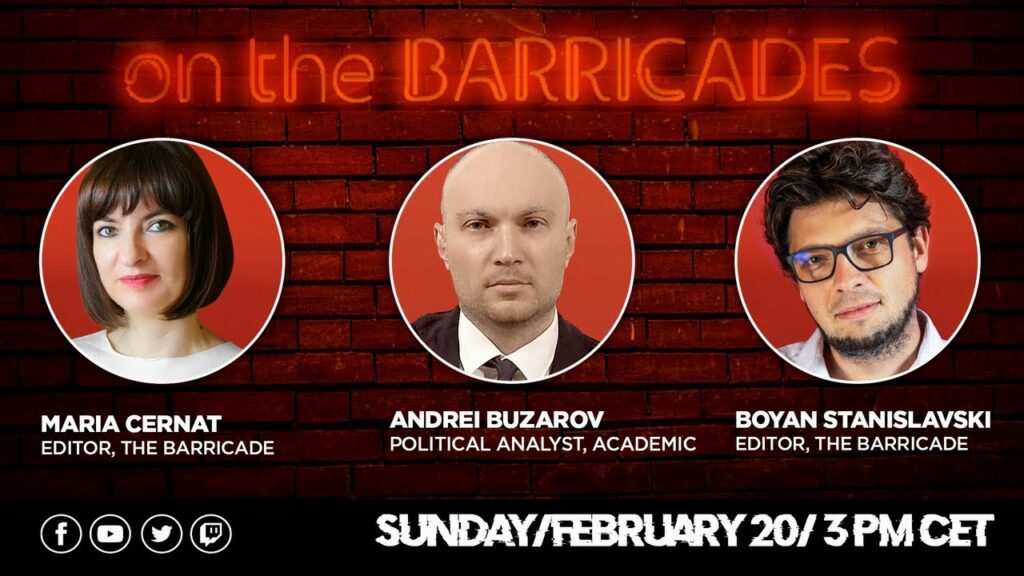
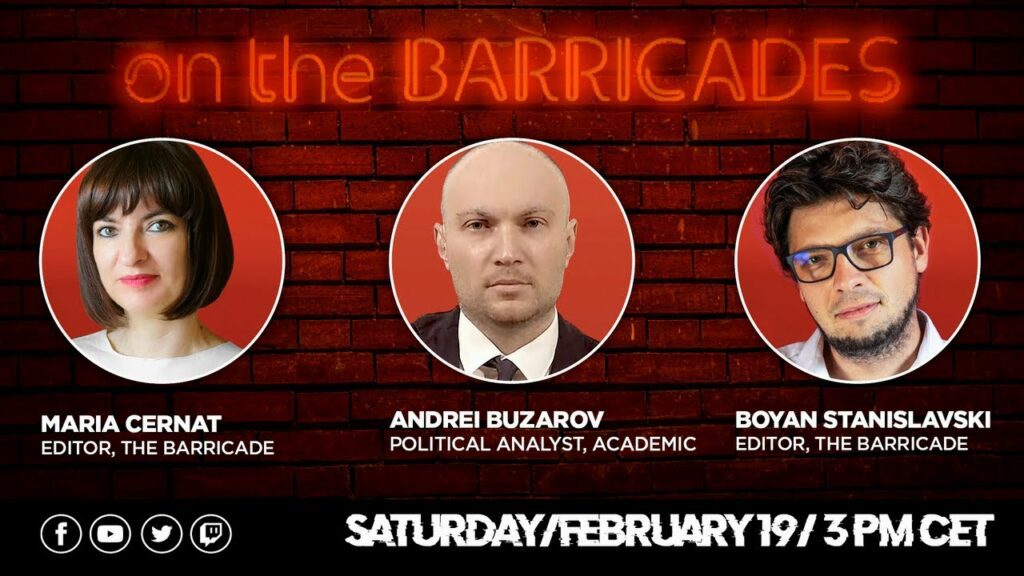
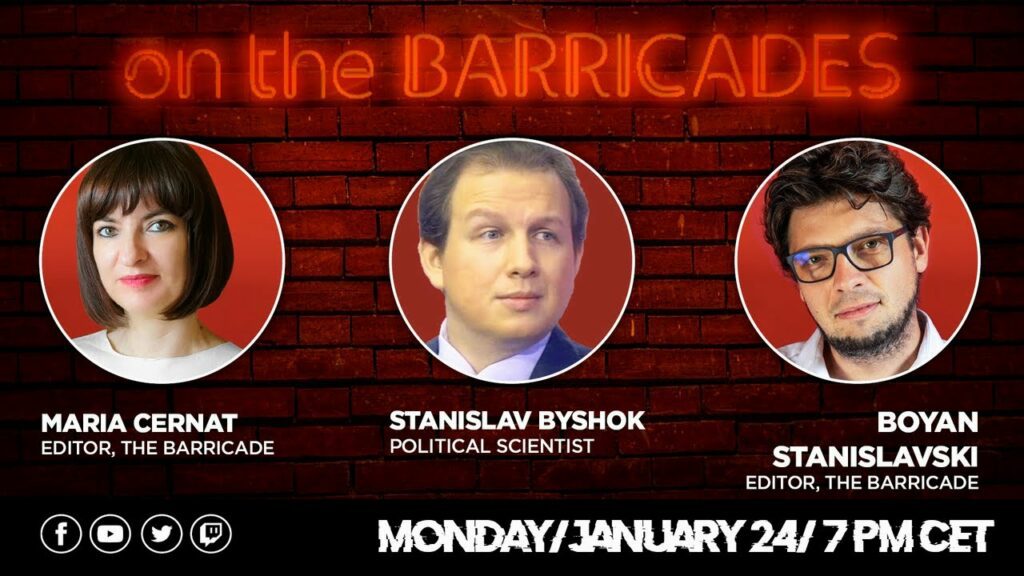
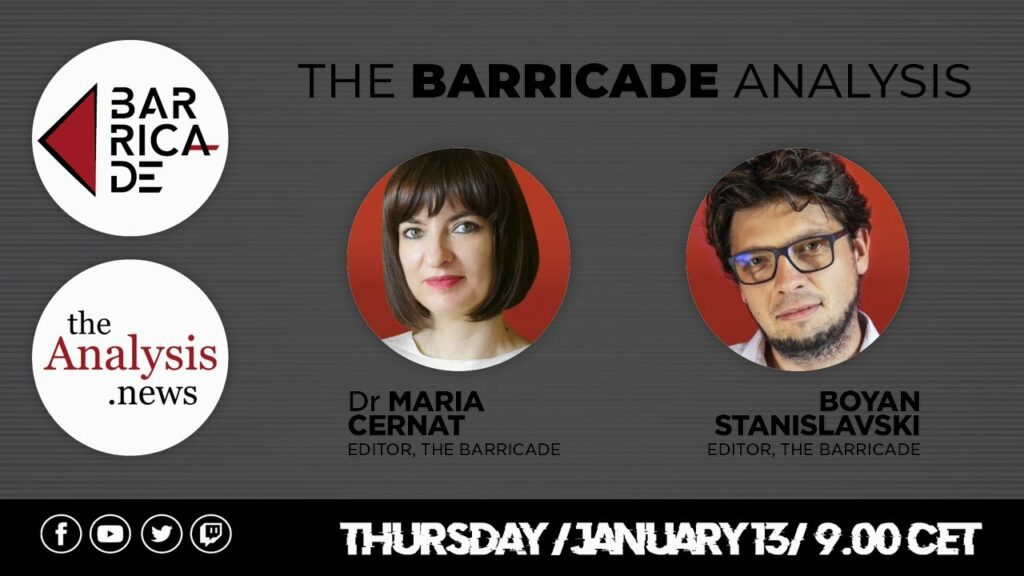
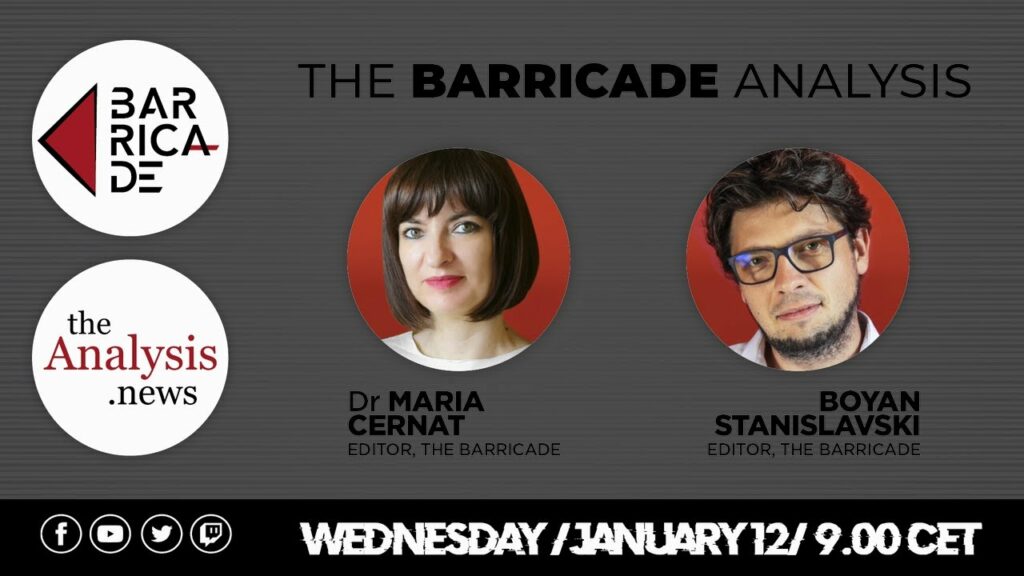
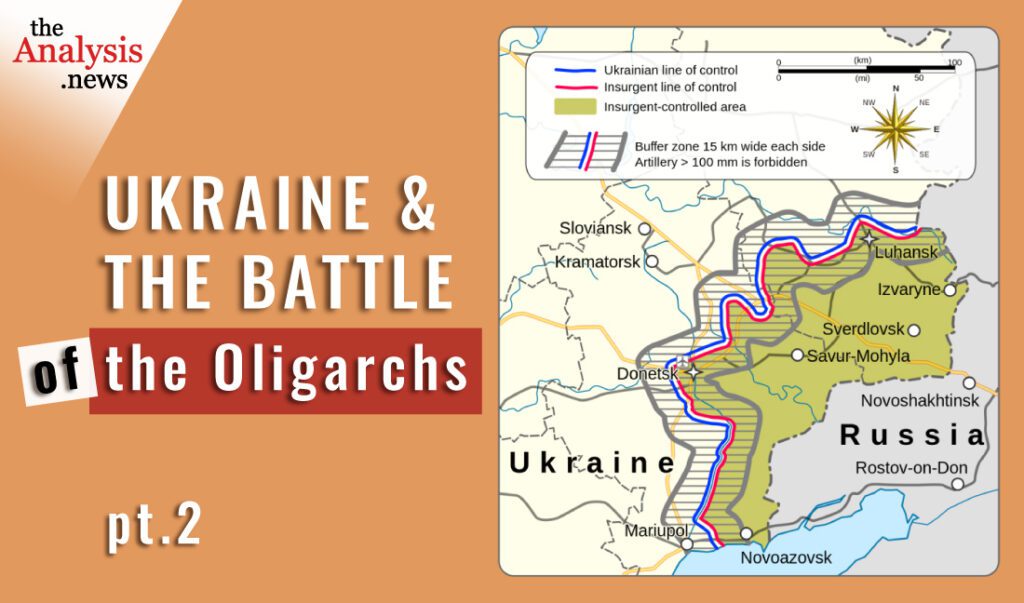
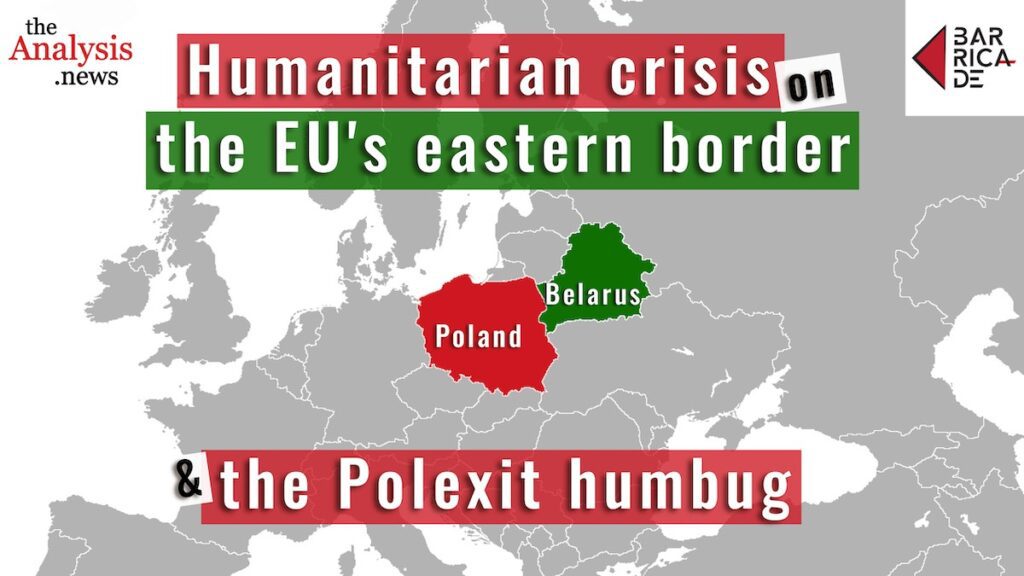
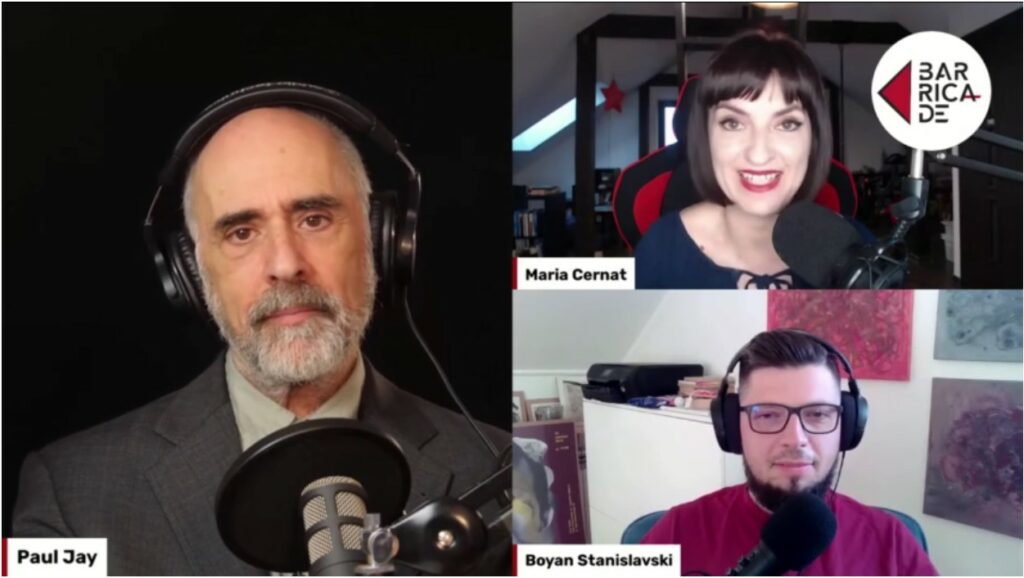
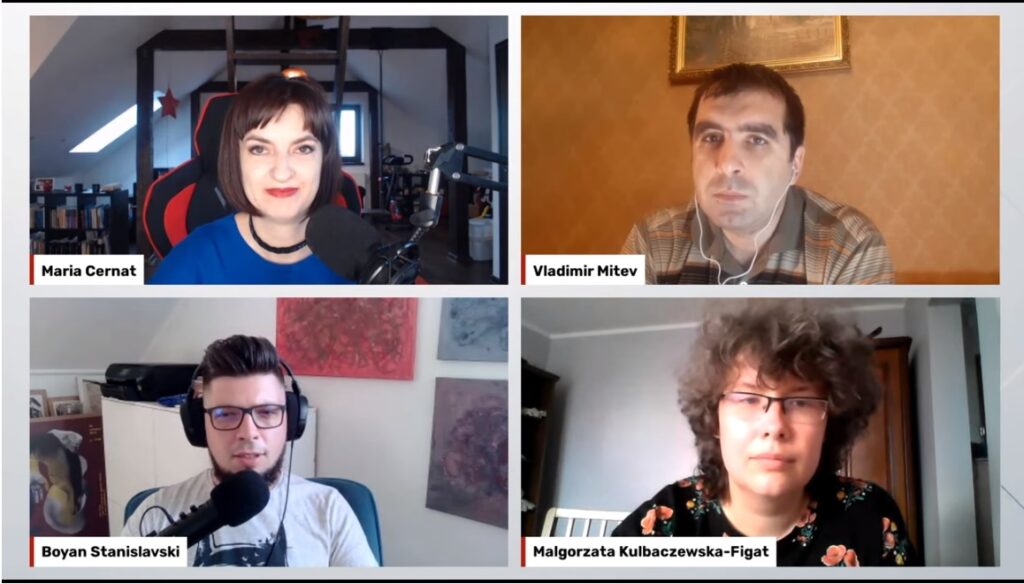
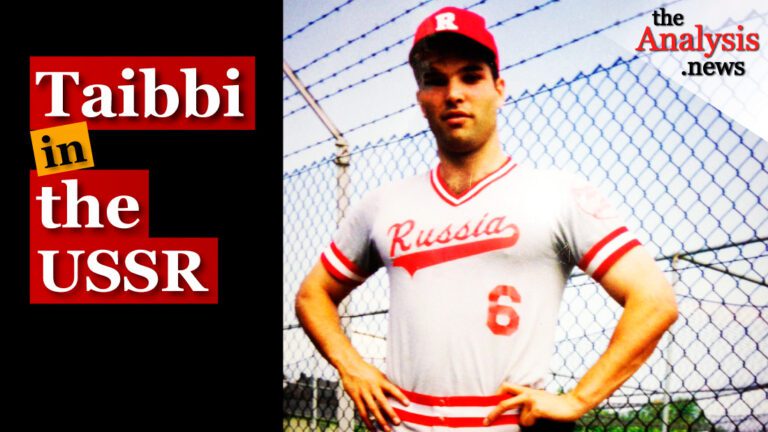
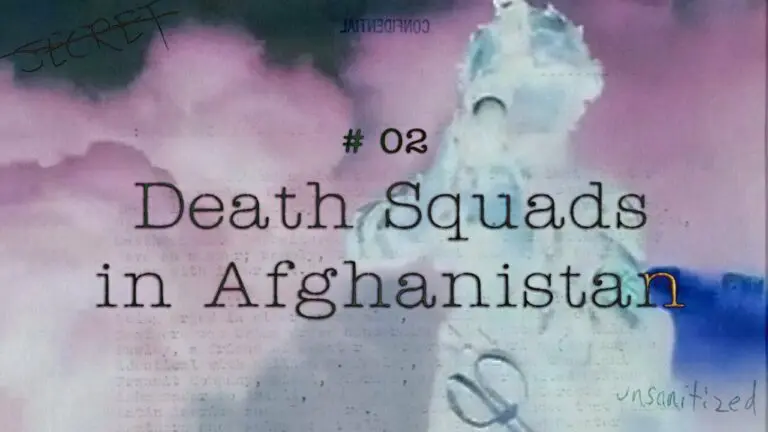
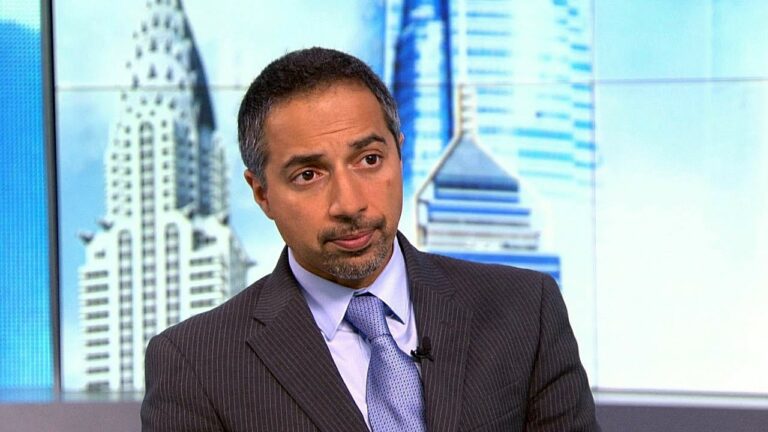
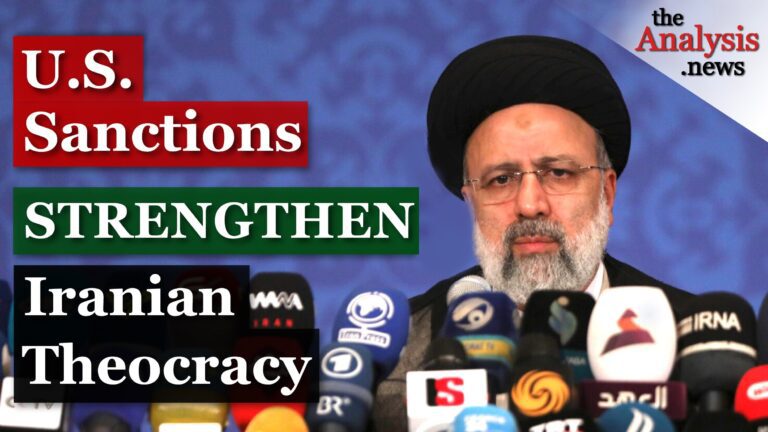
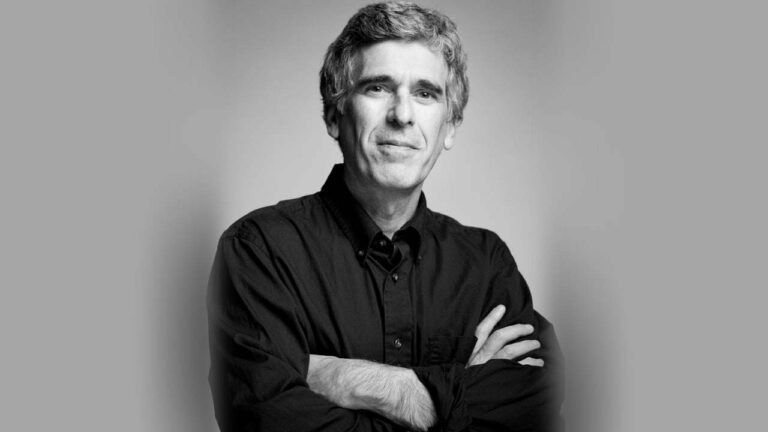

fantastic coverage! looking forward to Part Two 🙂